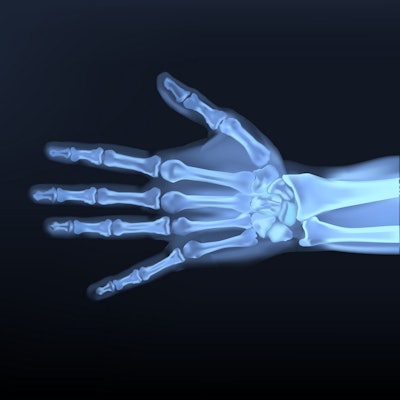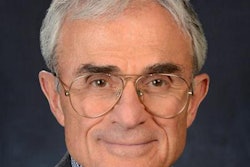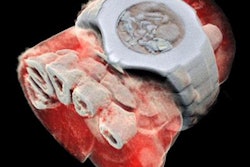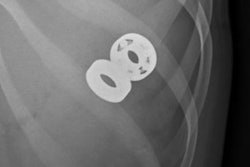
The use of skeletal radiography has grown at a modest rate in the U.S. Medicare population over the past 12 years, researchers reported in a March 24 paper in the Journal of the American College of Radiology. But shifts have occurred in the use of radiography that may indicate some physician self-referral of x-ray studies.
In aggregate, the utilization rate of skeletal radiography per 1,000 Medicare beneficiaries grew 9.5% from 2003 to 2015. During this period, the utilization rate grew 5.5% among radiologists and 11.1% among nonradiologists, according to a team led by Dr. Daniel Mizrahi of Thomas Jefferson University Hospital. The senior author of the study was Dr. David C. Levin.
While skeletal radiography isn't as sexy as advanced modalities such as CT and MRI, it is still widely used: The modality made up 22.8% of the entire volume of noninvasive diagnostic imaging among Medicare beneficiaries in 2015. And more skeletal radiography is performed in the U.S. than chest radiography, the authors noted.
To see how the use of skeletal radiography has changed over the years, the authors analyzed data from Medicare Part B Physician/Supplier Procedure Summary Master Files from 2003 to 2015. They included 37.5 million enrollees in fee-for-service Medicare plans, but not the 17.2 million who were enrolled in Medicare Advantage plans as of 2015.
In addition to noting overall changes in the use of skeletal radiography, they also calculated how much the use rate changed among different types of physicians.
| Change in use rate of skeletal radiography in Medicare system, 2003-2015 | |
| Physician type | Percent change |
| Overall | 9.5% |
| Radiologists | 5.5% |
| Nonradiologists | 11.1% |
| Orthopedic surgeons | 10.6% |
| Nonphysician providers | 440.7% |
| Chiropractors and podiatrists | 14.4% |
| Primary care physicians | -33.5% |
While the growth rate among nonphysician providers was highest, this group used skeletal radiography at far lower rates than physicians, even after the strong growth from 2003 to 2015. The growth could reflect a tendency on the part of primary care physicians to scale back interpretations of radiography and instead have nurse practitioners and physician assistants take on the responsibility.
There were also changes in skeletal radiography use by service location. It grew 29.2% in emergency departments, 16.2% in nonemergent outpatient environments, and 6.3% in private offices, but it fell 27.9% in the inpatient environment.
Previous research indicated that nonradiologist physicians tend to order more imaging when they own their own imaging equipment, Mizrahi and colleagues noted. But such self-referral could be justified in private offices, as a skeletal radiography study "is considered an essential part of each initial visit in some orthopedic practices," and it would be inconvenient for patients to have to go to a separate facility for the study.
The "best of both worlds" option would be for skeletal radiographs to be acquired at the point of care and then interpreted by a radiologist, they concluded.



















